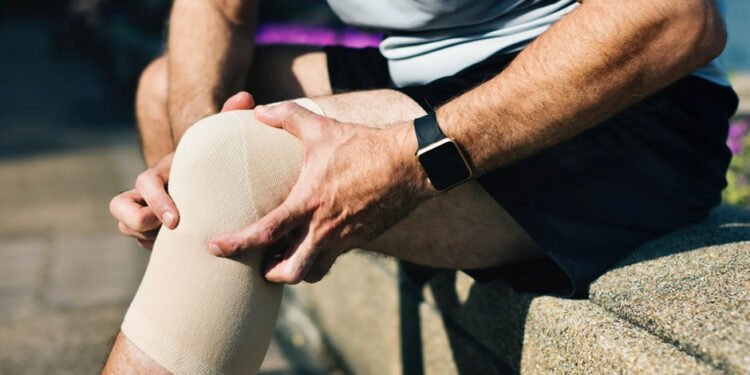Running is one of the most popular forms of exercise, offering numerous physical and mental health benefits. However, it also comes with its fair share of risks. Understanding the common injuries associated with running can help you stay on track and enjoy your runs pain-free. In this article, we’ll explore the top running injuries, their causes, prevention tips, and when to seek medical help.
Top Running Injuries and Their Causes
1. Runner’s Knee (Patellofemoral Pain Syndrome)
Runner’s knee is characterized by pain around the kneecap, often worsened by activities like climbing stairs or sitting for long periods. It’s typically caused by overuse, misalignment, or weakness in the muscles surrounding the knee.
2. Shin Splints (Medial Tibial Stress Syndrome)
Shin splints manifest as pain along the inner edge of the shinbone. This condition is common among new runners and is often a result of increasing mileage too quickly, running on hard surfaces, or wearing improper footwear.
3. Plantar Fasciosis
Plantar fasciosis occurs when the thick band of tissue on the bottom of the foot becomes inflamed, leading to heel pain, especially after long periods of rest. It is frequently caused by overuse, high-impact activities, and inadequate arch support in shoes.
4. Achilles Tendinitis
This injury involves inflammation of the Achilles tendon, which connects the calf muscles to the heel bone. Common in runners who suddenly increase intensity or distance, Achilles tendinitis can lead to severe pain and swelling. If you’re transitioning from jogging to running, be mindful of how your body reacts to increased demands on this tendon.
5. IT Band Syndrome
Iliotibial band (IT band) syndrome presents as pain on the outer side of the knee. It often results from repetitive movements and can be aggravated by poor running mechanics, overtraining, or muscle imbalances.
6. Stress Fractures
Stress fractures are small cracks in bones often caused by repetitive stress, overtraining, or sudden increases in running distance. Common locations for stress fractures include the foot, shin, and pelvis.
7. Hamstring Strain
Hamstring strains occur when the muscles at the back of the thigh are overstretched or torn. This injury is prevalent in runners who do not adequately warm up or who suddenly increase their running speed.
8. Ankle Sprain
Ankle sprains happen when the ligaments that support the ankle are stretched or torn, often due to uneven surfaces or sudden changes in direction. They can be quite painful and may require extended recovery time.
9. Hip Bursitis
Hip bursitis is inflammation of the bursa, a small sac of fluid that cushions the hip joint. This injury can be caused by overuse, poor running form, or tight hip muscles, leading to pain on the outside of the hip.
10. Piriformis Syndrome
Piriformis syndrome occurs when the piriformis muscle irritates the sciatic nerve, causing pain in the buttocks and down the leg. It is often linked to overuse and improper muscle function.
General Prevention Tips for All Running Injuries
Preventing running injuries is essential for maintaining an active lifestyle. Here are some general tips:
- Warm Up and Cool Down: Always incorporate dynamic stretching before and static stretching after your runs to prepare your muscles and aid recovery.
- Gradual Increase in Mileage: Avoid sudden increases in your running distance or intensity. Follow the 10% rule: increase your mileage by no more than 10% each week.
- Invest in Proper Footwear: Choose running shoes that fit well and provide adequate support for your foot type. Consider visiting a specialty running store for professional advice.
- Strength Training: Incorporate strength training exercises targeting key muscle groups, particularly the core, hips, and legs, to improve stability and reduce injury risk.
- Cross-Training: Engage in low-impact activities like swimming or cycling to give your joints a break while still improving cardiovascular fitness.
- Listen to Your Body: Pay attention to any pain or discomfort. Resting and allowing your body to recover can prevent minor issues from becoming significant injuries.
- Proper toe alignment: Using toe spacers can help improve foot alignment, enhance stability, and reduce the risk of foot-related injuries, especially for runners who struggle with issues like plantar fasciitis.
When to Seek Medical Help
If you experience persistent pain, swelling, or any injuries that do not improve with rest and home care, it’s crucial to seek medical advice. Early intervention can prevent further damage and ensure a more effective recovery.
Conclusion
Running injuries can be frustrating, but by understanding their causes and implementing preventive measures, you can minimize your risk and keep enjoying the benefits of this fantastic exercise. Remember to listen to your body, invest in good footwear, and consider supportive aids like toe spacers for optimal foot health. Stay informed and proactive about your running routine to ensure it remains an enjoyable and injury-free activity.












